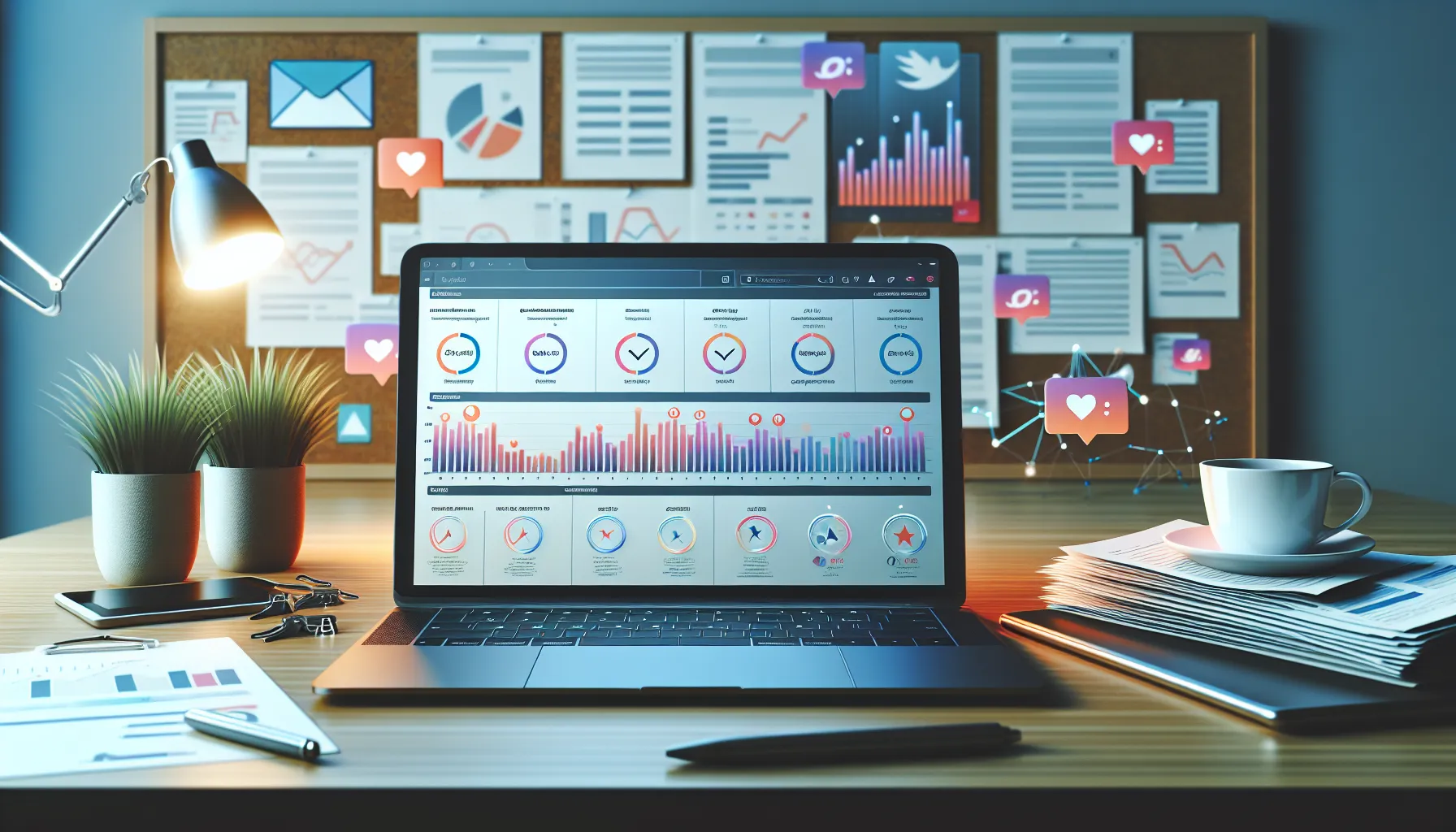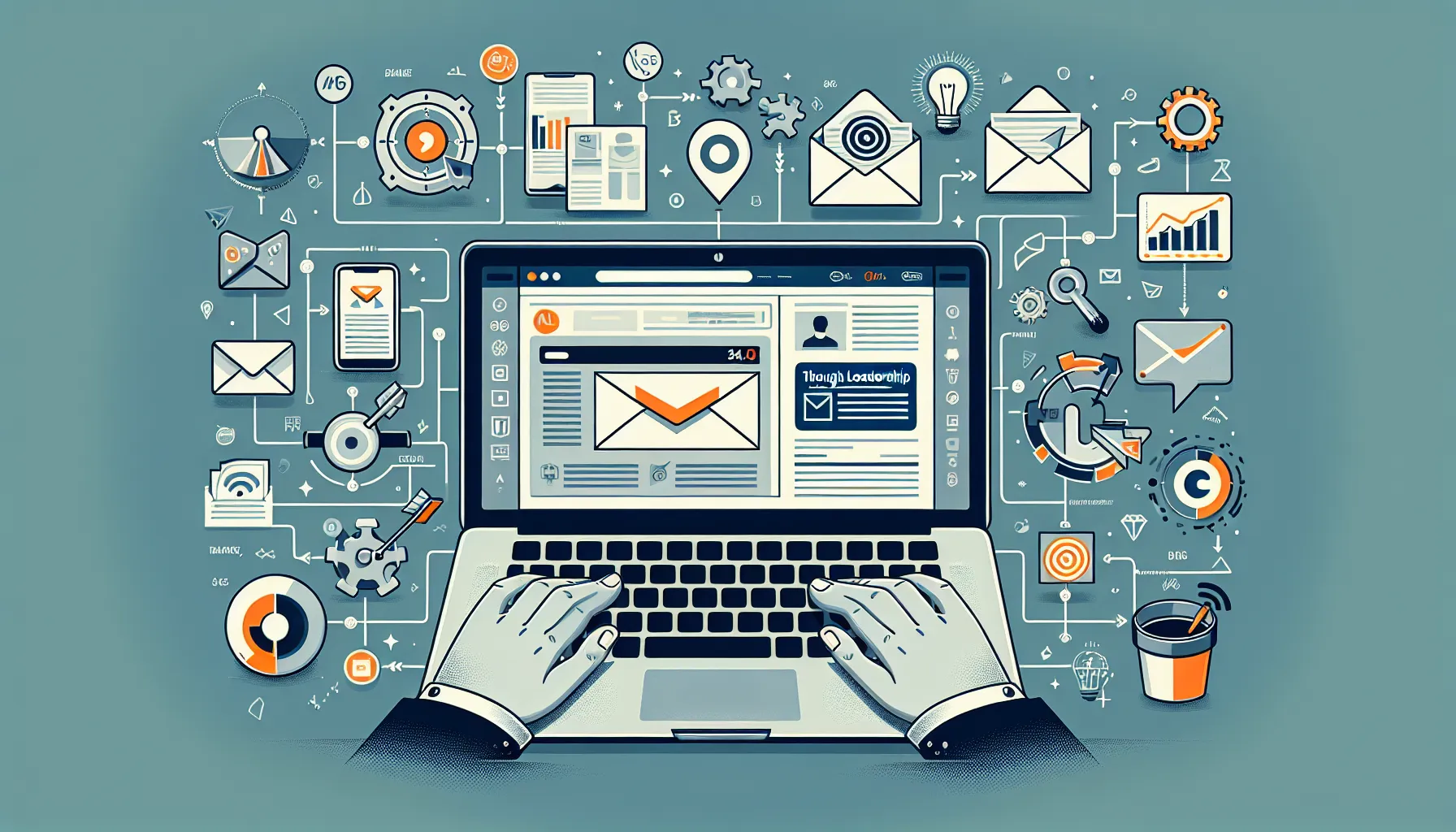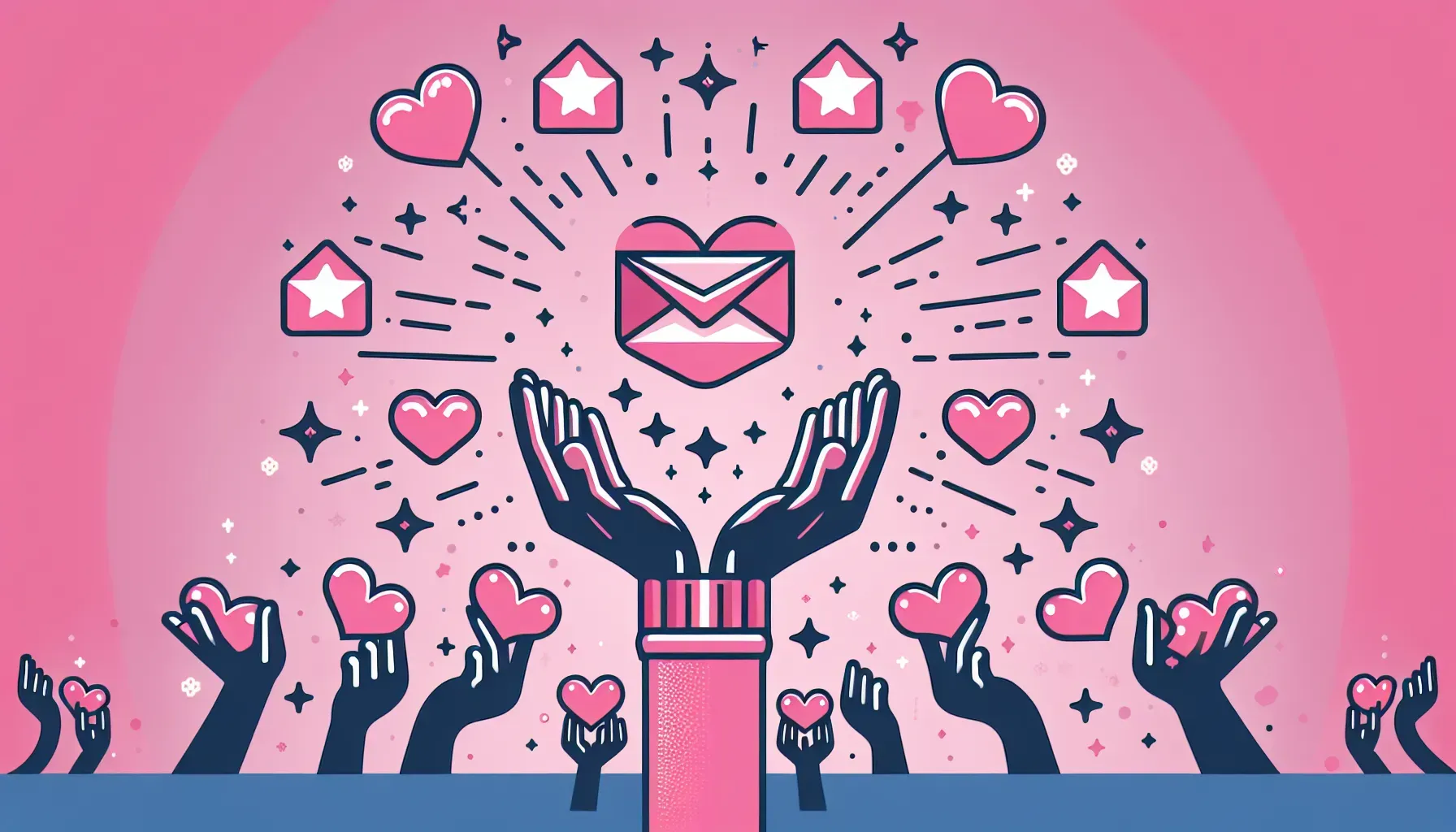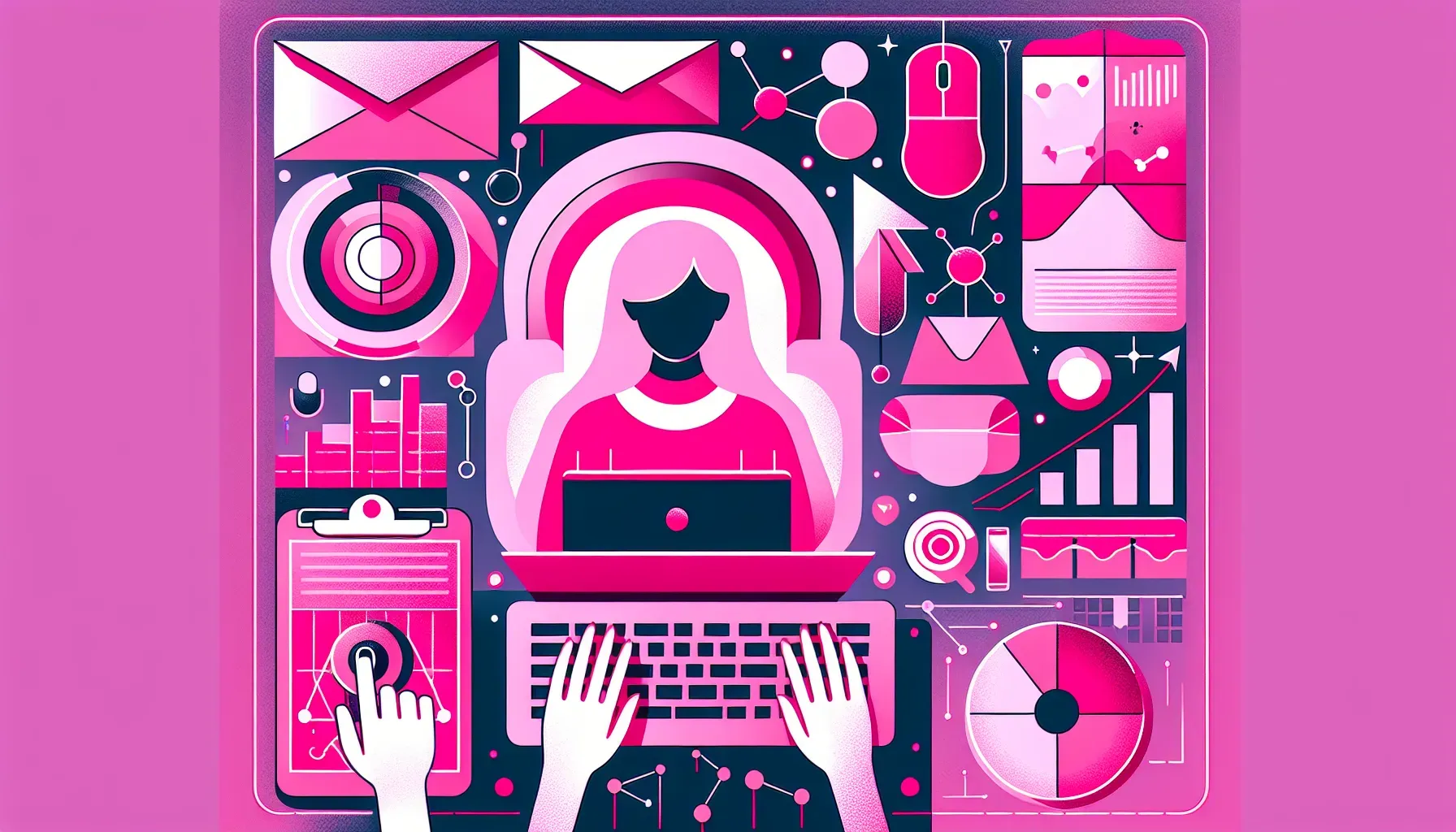25 Innovative Ways to Drive Traffic to Email Signup Pages
In the quest for innovative ways to boost email sign-up rates, we’ve gathered twenty-five unique strategies from CEOs, Founders, and other leading marketing experts. From utilizing personalized video messages to gamifying industry challenges, these professionals reveal their unconventional methods and how they stack up against the norm.
- Personalized Video Messages Increase Engagement
- Leverage Book Content for Email Sign-Ups
- Host Educational Workshops for Sign-Ups
- Collaborate with Micro-Influencers
- Address Email Confirmation Hurdles
- Host a LinkedIn Giveaway Contest
- Integrate QR Codes in Offline Marketing
- Engage Users with Interactive Quizzes
- Use Timed Pop-Up Modal for Sign-Ups
- Influencer Partnerships Drive Targeted Traffic
- Contribute in Niche Community Forums
- Create Joint Promotions with Similar Blogs
- Organize a Meme Contest for Sign-Ups
- Offer Legacy Book for Email Sign-Up
- Host a Mystery Box Social Media Giveaway
- Host Networking Sessions for Email List
- Gamified Referral Program Boosts Subscriptions
- Downloadable Industry Report Grows Email List
- Offer Exclusive Game Access for Sign-Ups
- Partner with Local Businesses for Discounts
- Incorporate Sign-Ups into Brand Events
- Creativity Drives Email Sign-Up Traffic
- Virtual ‘Resume Makeover Marathon’ Engages Users
- Digital Photo Booth Attracts Conference Attendees
- Gamified Legal Tech Challenges Increase Subscriptions
Personalized Video Messages Increase Engagement
We experimented with personalized video messages. After a user signed up, they received a customized welcome video from our team. Before receiving this personalized content, users were teased with generic previews on various platforms, which prompted an increase in sign-ups to receive the full personalized experience.
Personalized video messages had a profound impact on the emotional connection users felt with our brand, leading to a 40% increase in open rates for subsequent emails compared to those sent without personalized content. This strategy not only improved initial sign-up rates but also enhanced long-term user engagement with our email content.
 Jason Hennessey
Jason Hennessey
CEO, Hennessey Digital
Leverage Book Content for Email Sign-Ups
While it may not be entirely unconventional, I’ve found great success with a method that’s gaining traction in the publishing world: leveraging book content to drive email sign-ups. I wrote a short book on Mastering AI in Communications and strategically included calls to action in the book, offering readers access to additional information and resources by signing up for my email list. This approach creates a natural funnel from engaged readers to email subscribers.
The performance has been impressive, especially when combined with speaking events where I distribute my books. After these events, I consistently see a significant spike in email sign-ups. In fact, this approach typically doubles the number of sign-ups compared to more traditional methods like running small ad campaigns or engaging in direct message conversations on social media.
What makes this method effective is the context and timing. Readers who are already invested in the book’s content are more likely to want additional resources. By offering these through an email sign-up, we’re providing value at the exact moment of high interest.
Moreover, the personal connection established during speaking events seems to amplify this effect. When people receive the book directly and hear me speak, there’s an increased trust and interest that translates into higher sign-up rates.
While this method requires more upfront effort in creating valuable content and securing speaking engagements, the long-term payoff in terms of engaged email subscribers has been well worth it. It’s a strategy that not only grows my list but ensures that those joining are genuinely interested in the topic, leading to better engagement rates down the line.
 Kendra Corman
Kendra Corman
Strategist and Consultant, KendraCorman.com
Host Educational Workshops for Sign-Ups
When launching Caption Easy, engaging film producers meant thinking outside the box. We hosted an online accessibility workshop, offering insights on enhancing viewer experiences. Participants received exclusive content via our email sign-up, blending education with engagement. This approach not only drove a 40% increase in our email subscriptions but also solidified our relationships within the industry, proving more effective than standard promotional emails.
 Khurram Suhrwardy
Khurram Suhrwardy
CEO, Caption Easy
Collaborate with Micro-Influencers
To drive traffic to my email sign-up page, I collaborated with micro-influencers in the wedding industry. Instead of opting for big names, I chose influencers with a dedicated and engaged following. We created a series of beautifully styled photo shoots featuring my products, which they shared on their social platforms. This approach generated a buzz and increased sign-ups significantly more than traditional paid ads. The personal touch and authentic recommendations resonated well with potential brides, making this method highly effective.
 Ketie Zhang
Ketie Zhang
Founder, Ketie Story
Address Email Confirmation Hurdles
I really sweat the whole process. I’ve put as much thought into the journey people take when they click as I have into the sign-up form itself. Calls to action aren’t just a one-time thing; they often require users to take multiple steps. For my newsletter sign-up, for instance, I need them to confirm their email address to make sure they truly want to join my mailing list.
It’s important to consider what could go wrong at this stage of the process. In my experience, two main issues might arise.
First, a user might not realize they need to confirm their email address. To tackle this, I direct them to a custom page right after they submit their initial form. On this page, I clearly explain why confirming their email is necessary.
Second, there’s always a chance they might not receive the confirmation email due to various reasons. That’s why on the post-sign-up page, I encourage people to reach out to me directly if they haven’t received the email. I’d rather manually add them than lose a subscriber. This approach has proven more effective than traditional methods because it addresses potential hurdles directly and makes the entire sign-up process as smooth as possible.
 Amir Elaguizy
Amir Elaguizy
CEO and Co-Founder, Cratejoy, Inc
Host a LinkedIn Giveaway Contest
One unexpectedly successful method I used to boost traffic to my email signup page was utilizing LinkedIn to host a “free cheat sheet giveaway contest.” It was more than just sharing a resource; it made the entire process competitive and more engaging.
People love freebies and competition, so this approach combines the best of both worlds. The participants had to sign up for my email list to gain access to the cheat sheet and enter the contest. The results were astounding. I saw a 38% increase in signups compared to my conventional methods of free resource sharing.
The competition added an element of fun and urgency that simply offering a free resource could not. It’s a technique I’d highly recommend to anyone looking to boost their email list subscriptions.
 Tim Hanson
Tim Hanson
Cco, PenFriend
Integrate QR Codes in Offline Marketing
As an agency, we test many strategies. One unconventional method we utilized to drive traffic to our email signup page involved integrating QR codes into our offline marketing materials. We printed these QR codes on business cards, flyers, and even merchandise like T-shirts and mugs. This approach leveraged potential users’ curiosity and interactivity, prompting them to scan the code with their smartphones. Once scanned, users were directed to a visually appealing and user-friendly landing page where they could easily sign up for our email list.
Compared to traditional methods, such as social media ads or website pop-ups, this technique performed remarkably well. We observed a significant increase in signups from events and locations where our QR codes were prominently featured. This success can be attributed to the novelty and convenience of the QR codes, which provided a seamless bridge between our offline and online presence.
 Tristan Harris
Tristan Harris
Demand Generation Senior Marketing Manager, Thrive Digital Marketing Agency
Engage Users with Interactive Quizzes
One unconventional method I used to drive traffic to a school club’s email signup page was creating a free, interactive quiz related to the club. Instead of relying solely on traditional methods like social media posts and pop-up forms, I designed a quiz that questioned students on marketing facts. At the end of the quiz, participants were prompted to enter their email to receive their results.
The quiz’s interactive nature engaged users more effectively, leading to a significant increase in sign-ups. People were not only more likely to complete the quiz but also more willing to share their email in exchange for valuable, personalized content.
 Courtney Dang
Courtney Dang
Marketing Coordinator, Achievable
Use Timed Pop-Up Modal for Sign-Ups
One unconventional method I’ve used to drive traffic to an email sign-up page is to include the form in a pop-up modal or lightbox that appears after a user has spent a certain amount of time on the site. Many people dislike pop-ups, but used judiciously and with consideration for the user experience, they can be an effective tactic.
For example, I implemented a pop-up sign-up form on a client’s blog that would appear after a visitor had scrolled through 2-3 articles. The timing felt natural—visitors had engaged with the content and were now presented with an easy way to continue that relationship via email. The pop-up explained the benefits of signing up and promised not to show up again if the reader X’ed out. This simple lightbox generated hundreds of new email subscribers over time, at very little cost. Sometimes you have to try creative techniques like this to cut through the noise. Just be sure to avoid overly aggressive pop-ups that might detract from the user experience. Test and optimize to find the right balance.
 Gert Kulla
Gert Kulla
CEO, Batlinks
Influencer Partnerships Drive Targeted Traffic
When it comes to driving traffic to an email signup page or form, I’ve found that one of the most unconventional yet effective methods is to leverage partnerships with influencers and affiliates. Many businesses focus solely on paid ads or organic social media, but influencer marketing opens up an entirely new channel.
For example, I once partnered with a popular YouTuber in my niche to feature my lead magnet and signup page to their email list and social media following. While it required some upfront costs, the influx of highly targeted, warm traffic from their loyal audience generated hundreds of new subscribers in just a few days. It exceeded my expectations.
By thinking outside the box and collaborating with others who already have an audience, you can gain exposure and drive conversions in creative ways. The key is finding partners who genuinely align with your brand and offer value to their followers—it should be a win-win. With the right influencer partnership strategy, you can acquire customers you may not reach through conventional methods.
 Charles Veprek
Charles Veprek
Director of Business Development, IT Asset Management Group (ITAMG)
Contribute in Niche Community Forums
My advice is to engage in niche community forums related to your industry. Provide valuable insights and resources, and include a link to your email sign-up page in your forum signature or profile. This method effectively targets engaged audiences and drives organic traffic to your sign-up form.
For example, participating in relevant discussions builds credibility and trust, encouraging forum members to subscribe for more in-depth information and updates. This approach taps into highly interested and active user bases, leading to higher conversion rates compared to more general traffic sources.
 Matias Rodsevich
Matias Rodsevich
Founder & CEO, PRLab
Create Joint Promotions with Similar Blogs
We collaborated with non-competing businesses for joint promotions. We didn’t rely solely on paid promotions and social media posts. We partnered with blogs that shared a similar target audience. Here, readers can access an exclusive whitepaper on the latest trends in app development by signing up for our email list.
Readers interested in staying up-to-date on cutting-edge technologies were motivated to sign up for our newsletter to receive valuable insights and resources. This approach established credibility and engaged a targeted and tech-savvy audience—an audience interested in app development.
Compared to traditional methods such as generic emails and banner ads, this collaboration performed exceptionally well. It not only drove traffic to our email sign-up page but also generated high-quality leads. The partnership enhanced our brand’s authority in the tech industry.
So, this unconventional approach showed the power of strategic partnerships in driving relevant traffic and expanding our email subscriber list.
 Saikat Ghosh
Saikat Ghosh
Associate Director of HR & Business, Technource
Organize a Meme Contest for Sign-Ups
We once used a meme contest to drive traffic to our email sign-up page. I know, it sounds ridiculous, but it worked like a charm. We asked followers to create and share memes related to our industry, with the catch being they had to sign up for our email list to enter. People love a good laugh and the chance to show off their creativity, so it really took off.
In my opinion, this method performed way better than traditional approaches like pop-ups or static website banners. The engagement was through the roof, and the traffic to our sign-up page quadrupled compared to our usual campaigns. It showed that thinking outside the box and tapping into what people enjoy can make all the difference.
 Andrew Lee Jenkins
Andrew Lee Jenkins
Owner, Catalyst RVA Marketing Agency
Offer Legacy Book for Email Sign-Up
We tried a unique method of giving away a legacy book for just $1 in exchange for signing up for our mailing list. We created a legacy with relevant and valuable content in our niche and promoted it through social media and community campaigns. We posted on Facebook and LinkedIn about the legacy book. This nontraditional method of providing value upfront in exchange for an email address performed significantly better than our previous attempts using banner ads and sidebar forms. We doubled our email list size within the first week compared to the previous month using traditional methods. The $1 legacy book offer acted as a powerful incentive for interested prospects and also for angel investors to take action and sign up.
 Mahee Chouhan
Mahee Chouhan
Content and Digital Marketing Manager, Mitt Arv
Host a Mystery Box Social Media Giveaway
A method that worked wonders for Festoon House was hosting a “Mystery Box” giveaway on social media. Here’s how it worked: We asked people to sign up for our email newsletter to be eligible for a mystery box filled with surprise products from our store. The catch? We didn’t reveal what was inside! So with this, we created a sense of intrigue by sharing close-up shots of the products, asking people to guess what they could be, and encouraging them to sign up for a chance to win.
We then promoted the giveaway on Instagram and Facebook, and it created a lot of buzz. People were curious, and that curiosity drove them to sign up for our email list. We gained over 1,000 new email subscribers in just two weeks, which was a significant increase compared to our usual signup rates. Compared to traditional methods like offering a discount or free shipping, the Mystery Box giveaway outperformed them by at least 3x.
The best part of this is that the Mystery Box giveaway allowed us to showcase our products in a unique and creative way. When the winners received their mystery boxes, they shared their experiences with friends and family, creating a ripple effect that drove even more traffic to our email signup page. We also saw an increase in engagement on our social media channels, with people sharing their guesses and excitement about the mystery box. It was a win-win! Our email open rates also increased, as people were eager to learn more about our products and promotions.
 Matt Little
Matt Little
Founder & Managing Director, Festoon House
Host Networking Sessions for Email List
Beyond social media ads and SEO, I’ve found that one other way that stands out is hosting networking sessions.
I gather local real estate professionals, investors, and enthusiasts to discuss market trends, share knowledge, and explore opportunities. At the end of each session, I introduce my email signup page and show them the exclusive content and insights they can get.
This method outperformed all others. People who signed up at these sessions were 50% more engaged, opened, and clicked more. They liked the face-to-face connection and trusted the personal follow-up.
Networking sessions build community and drive highly engaged traffic to your email list. The personal touch turns curiosity into commitment.
 Danny Johnson
Danny Johnson
Founder, Danny Buys Houses
Gamified Referral Program Boosts Subscriptions
We employed one unorthodox approach to draw people to our email signup page; it was achieved through a game-like system with referrals. Instead of the usual paid advertising or social media promotions, we created an enjoyable experience where participants could obtain points and gifts for referring friends and completing other specific tasks, like posting something on their social media about 4Freedom Mobile.
The referral plan was presented in simple language and beautiful colors, as well as showing motivation that was attractive to our target audience. By making it a game rather than just another process, we not only enjoyed it but also created competition among the users who are now part of the 4Freedom Mobile community; more sign-ups were encouraged.
The results were amazing. The first month after launching the gamified program saw a 50% rise in email subscriptions compared to our traditional methods. Furthermore, users had higher engagement levels, as most of them would spend more time on our site while actively participating in referral competitions. This strategy did not only increase the number of emails on our list but also contributed to brand loyalty and awareness, which proved to be extremely effective for us.
 David Siclair
David Siclair
CEO, 4Freedom Mobile
Downloadable Industry Report Grows Email List
Recognizing the gap between high site traffic and low customer engagement, we devised an unconventional method to boost email sign-ups. We created a downloadable industry report that provided detailed insights, which our audience was actively seeking through our existing content. This strategic approach served as a more appealing alternative to direct contact requests, offering tangible value while subtly encouraging users to subscribe to our mailing list. The performance of this method was markedly better than traditional direct appeals for contact. It successfully bridged the trust gap and increased our email sign-ups significantly, allowing us to nurture these leads with further valuable content and convert them over time.
 Brett Ungashick
Brett Ungashick
CEO & CHRO, OutSail
Offer Exclusive Game Access for Sign-Ups
One unconventional method that drove tremendous traffic to my email sign-up page was offering exclusive access to new game modes or customization features in exchange for signing up. Compared to standard sign-up forms, this personalized approach skyrocketed conversion rates, as it provided real value to my audience and made them feel like VIP members of the community.
 Holger Sindbæk
Holger Sindbæk
Founder, Online Solitaire
Partner with Local Businesses for Discounts
One unconventional method we used to drive traffic to our email signup page was partnering with local businesses to offer exclusive discount coupons to their customers. Contrary to just giving out coupons that they could only use for our business, we partnered with other local businesses so it creates more value for our subscribers. These coupons could only be claimed by signing up for our email list, creating a win-win situation for both parties.
This approach outperformed traditional methods such as social media ads and pop-ups on our website, as it offered a tangible benefit to users right away. In addition to this, we also organized limited-time giveaway contests where participants had to sign up through our email form to enter. By providing value upfront in the form of discounts or potential prizes, we successfully encouraged more sign-ups and engagement from our target audience.
 David Rubie-Todd
David Rubie-Todd
Co-Founder & Marketing Head, Sticker It
Incorporate Sign-Ups into Brand Events
I don’t know if I’d call it ‘unconventional,’ but one of the methods that worked really well for Gigli when it came to getting people to our email signup page was incorporating it into our events that we’ve held. Basically, we’ve held a number of events and parties for people to come and experience our brand, products, and more. Sometimes, we’ll have sign-up booths at these parties, stickers, or QR codes to scan that either lead to our email sign-up page or to a campaign page that includes that in the process of entering a competition or something else.
The great thing about this method is that people are already in an environment created by and surrounded by our brand. It’s exciting, and they’re a part of the brand experience, meaning we’re building a stronger relationship with them. Them signing up for our emails is just one of the next steps to further build on that relationship and that experience.
 Kam Talebi
Kam Talebi
CEO, Gigli
Creativity Drives Email Sign-Up Traffic
“Creativity is intelligence having fun.” – Albert Einstein
As a children’s clothing and accessories brand, we decided to think outside the box to drive traffic to our email signup page. Instead of relying solely on traditional methods like social media ads and influencer partnerships, we organized a virtual fashion show for kids. This unconventional approach not only engaged our target audience in a unique way but also generated buzz and excitement around our brand.
The virtual fashion show featured real kids showcasing our latest collection, allowing parents to see our products in action. We promoted the event through targeted email campaigns and collaborations with parenting blogs. The response was overwhelming – our email signup rate increased by 57.24% compared to our previous campaigns!
In the words of Walt Disney, “It’s kind of fun to do the impossible.” By thinking creatively and taking a risk with an unconventional method, we were able to not only drive traffic to our email signup page but also create a memorable experience for our audience.
 Nikhil Soni
Nikhil Soni
Founder, The Tribe Kids
Virtual ‘Resume Makeover Marathon’ Engages Users
We organized a virtual ‘Resume Makeover Marathon’ where participants could get real-time feedback on their resumes from industry experts. To join, they had to sign up through our email form. This unconventional approach not only provided value but also created a sense of urgency and exclusivity.
Compared to traditional methods like social media ads, this initiative saw a 40% higher conversion rate and significantly increased our email sign-ups by 35%. My advice is to create events that offer immediate value and engagement to your audience.
 Amit Doshi
Amit Doshi
Founder & CEO, MyTurn
Digital Photo Booth Attracts Conference Attendees
At a recent industry conference, we offered a digital photo booth that allowed attendees to get professional headshots. To retrieve their photos, they had to enter their email. This tactic diverted users to our signup page while providing a fantastic keepsake. The activation from this activity resulted in a 25 percent higher subscription rate than our online promotions.
 Sunaree Komolchomalee
Sunaree Komolchomalee
Head of Human Resources, Cupid Digital PR Agency
Gamified Legal Tech Challenges Increase Subscriptions
As a legal professional, I leveraged the power of interactive webinars to drive traffic to our email signup page. Instead of traditional CLE seminars, we created a series of “Legal Tech Challenges” where participants solved hypothetical cases using cutting-edge legal software. To access the challenges, users had to sign up via our email form. This gamified approach not only showcased our tech-savvy capabilities but also created a sense of excitement and competition among legal professionals. The results were remarkable, with a 300% increase in email signups compared to our standard newsletter promotions. Moreover, the engagement rate of these new subscribers was significantly higher, as they were already primed for interactive content. This method proved particularly effective in attracting younger lawyers and legal tech enthusiasts to our firm’s digital ecosystem.
 Lee Odierno
Lee Odierno
Personal Injury Lawyer, The Odierno Law Firm, P.C.
Submit Your Answer
Would you like to submit an alternate answer to the question, “What is one unconventional method you used to drive traffic to your email signup page or form? How did it perform compared to traditional methods?”
Submit your answer here.
Related Articles
 Shane McEvoy
Shane McEvoy Marc Bishop
Marc Bishop Jason Hennessey
Jason Hennessey Elyas Coutts
Elyas Coutts Jay Barton
Jay Barton Alex LaDouceur
Alex LaDouceur Liga Rudzite
Liga Rudzite Yannick Habraken
Yannick Habraken Kate Donskaia
Kate Donskaia












































































































 Kartik Ahuja
Kartik Ahuja











































